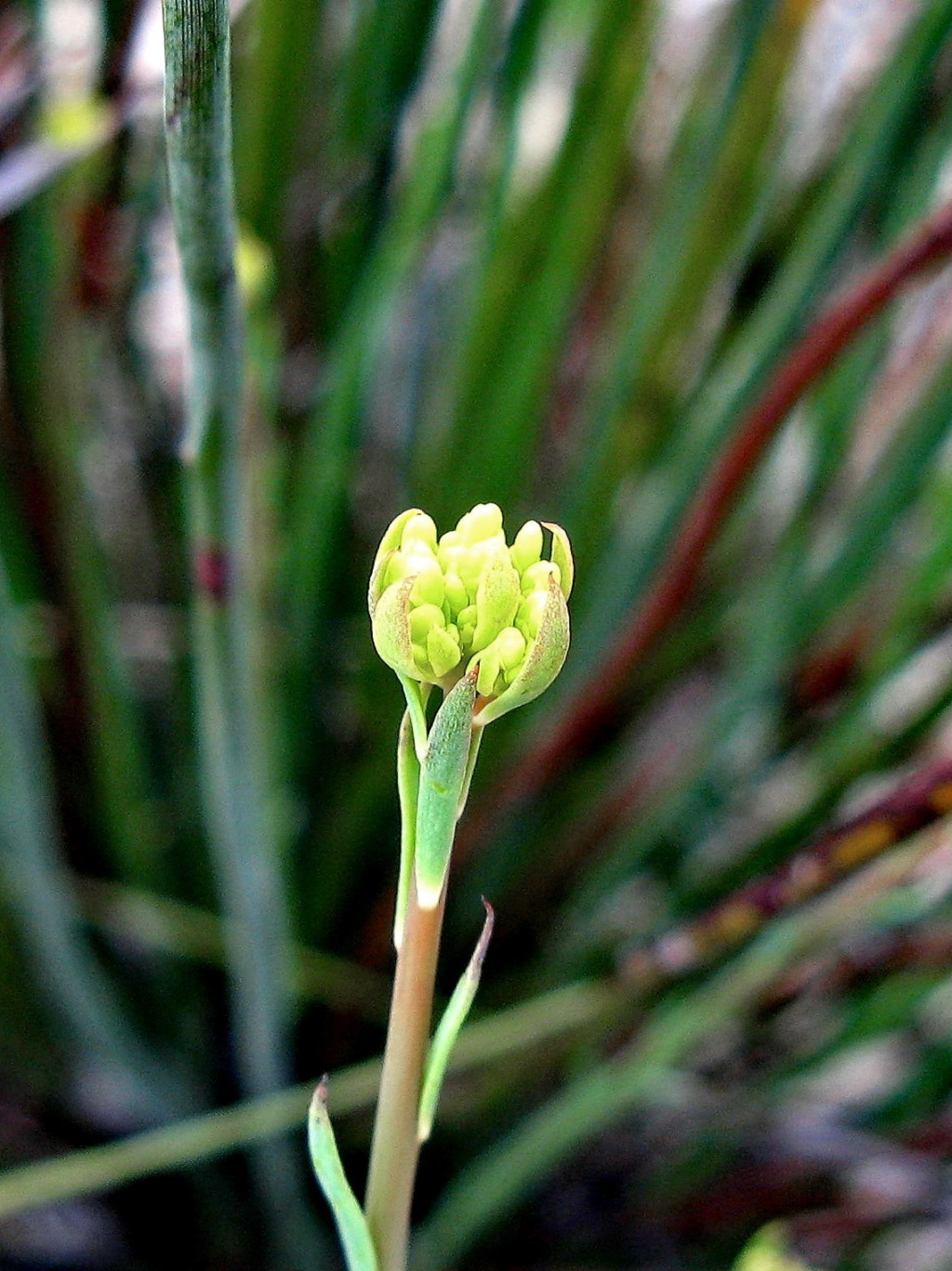Glischrocaryon behrii
(Schltdl.) Orchard Golden PennantsHerb 30–50 cm tall; stems numerous, 1–2 mm diam., often becoming almost leafless. Leaves terete to linear or narrow-lanceolate, 15–25 mm long, 1–3 mm wide. Inflorescence a flat-topped cyme of 5 or 6 dichasia of 7–60 flowers; bracts narrow-lanceolate, 7–9 mm long, 1–2 mm wide, adnate to peduncle; bracteoles narrow-oblanceolate, 1–2 mm long. Flowers yellow; sepals 2, 0.7–1.5 mm long; petals 2, 2–4 mm long, more or less hooded; stamens 4, anthers 1.5–3 mm long; ovary compressed pyriform, 3–3.5 mm long, wings 2, styles 2, 0.5–0.7 mm long, stigmas yellow. Fruit yellow or reddish, obovate, 5–10 mm long, 2-winged, with saccate longitudinal swellings opposite sepals; wings c. 2 mm wide. Flowers Sep.–Nov.
LoM, MuM, Wim, VRiv, RobP, MuF, Gold, CVU, GGr, DunT. Also SA, NSW. Confined in Victoria to the dry north and north-west, on deep sandy soils, often associated with mallee communities.
Jeanes, J.A. (1996). Haloragaceae. In: Walsh, N.G.; Entwisle, T.J., Flora of Victoria Vol. 3, Dicotyledons Winteraceae to Myrtaceae, pp. 887–908. Inkata Press, Melbourne.
 Spinning
Spinning


